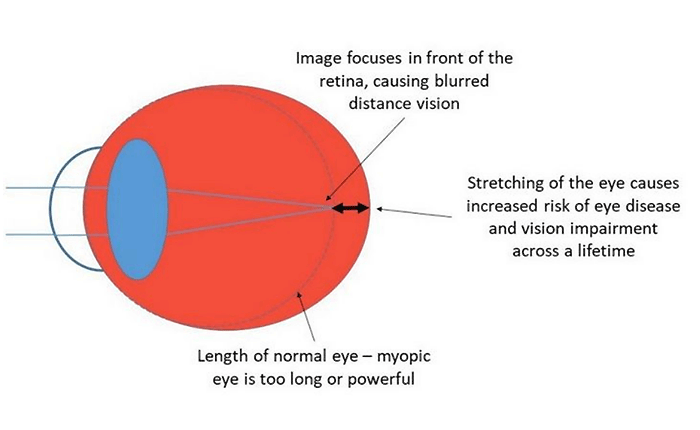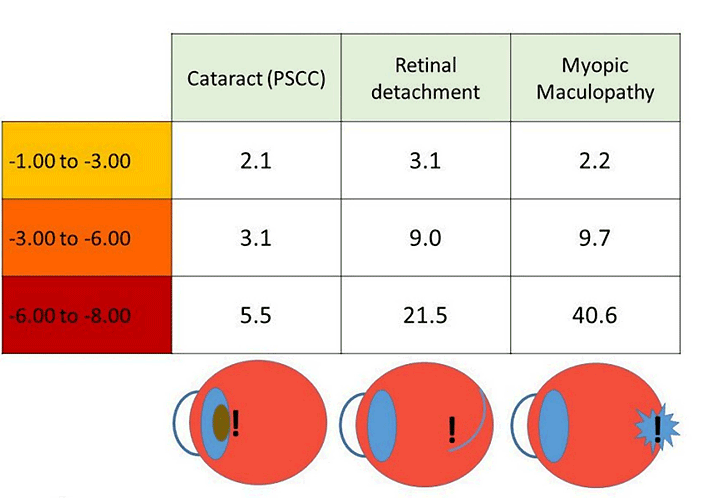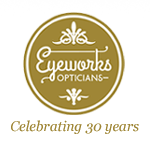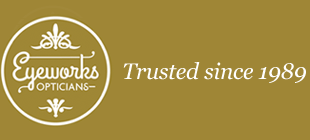Children’s Eye Care – Myopia Control
Myopia (short-sightedness) is a progressive eye disorder which affects vision, quality of life and also increases eye health risks across a person’s lifetime.

Short-sightedness (myopia) is a common vision condition in which near objects appear clear, but objects farther away look blurry. It occurs when the shape of the eye — or the shape of certain parts of the eye — causes light rays to bend (refract) inaccurately.
Key points
-
Myopia (short-sightedness) is a progressive eye disorder which affects vision, quality of life and also increases eye health risks across a person’s lifetime
- Myopia typically starts before age 10 and then deteriorates every several months thereafter until it eventually stabilizes in the late teens or early 20s
- Myopia control treatments are now available to slow down the progression, or worsening, of childhood myopia. These include special types of spectacle lenses and contact lenses (other treatments are also beginning to become available such as Red Light Therapy and atropine eye drops, but these are less proven and/or not yet licensed for use in the UK)
- Myopia control has short-term benefits of better vision between eye exams, less frequent need to change spectacles and less dependence on spectacles. However, by far the most significant factor is the potential to reduce the long-term risks to eye health which also comes with myopia.
- Considering your child or teenager’s time spent outdoors compared with time spent doing close vision tasks such as reading and screen use are also important factors in managing myopia.
Myopia in children and teenagers
We now know that myopia is more significant than just needing glasses for blurred vision. Myopia regularly progresses in children and teenagers, affecting their quality of life and increasing eye health risks in later life as an adult. Myopia control treatments can give children better vision now, and healthier eyes in the long term.
What is myopia?
Myopia is the elongation (over-growth) of the eyeball which in turn leads to blurred vision for far distance objects. It is also known as short-sightedness. It is more common in children who have one or both parents that are also myopic, but it can also develop in families with no previous history of the condition. It can also be affected by environmental factors such as too much close reading.
Myopia typically starts developing before age 10, and then progresses or worsens every few to several months in children and teenagers. It is caused by the eyes growing too quickly and too long compared to the normal rate of eye growth. This over-growth however also leads to stretching and thinning of the retina, which in turn leads to increased risk of certain eye conditions later in life. Retinal detachment, glaucoma, cataracts and maculopathy (a form of macula degeneration) are all more likely in myopic individuals, and as the myopia increases so does the risk of contracting these conditions in later life.
Myopia has traditionally been corrected with spectacles or contact lenses, which fix the focus of the eye to create clear vision while they are worn, but do nothing to reduce the rate of myopia progression. Myopia control lenses however do actively attempt to slow down this progression, and have been shown to be highly effective at doing so.
What is myopia control?
‘Myopia control’ has become the increasingly adopted term to describe the use of treatments aimed to slow down the progression of myopia. Myopia control spectacles and contact lenses deliver a clear and sharp image to the central part of the retina where it is needed, but introduce a deliberate defocus or blurring to the peripheral part of the retina. We now know that this peripheral blurring is greatly effective in reducing the growth rate of the eye in children, and therefore reducing the rate of myopia increase. Myopia control is particularly important for children, because this is the stage in life when myopia is most likely to progress quickly. However, it is also important in teenagers as their vision can still be worsening, albeit at a slower rate than in younger children. Around half of teenagers reach stability of their myopia progression around age 16, but many do continue to progress into early adulthood. Ideally, for best results myopia control treatment should continue until the prescription plateaus and reaches
stability.
Who is suitable for myopia control treatment?
Myopia control treatments have been mostly researched in children from around age 6 through to 16, and shown to be highly effective. In general, patients in this age range end up with around half of the level of myopia progression that they would have done without any intervention or treatment. There is less evidence for the efficacy of treatment for children younger than this, or for teens and young adults older than this. The appearance of myopia in very young children under 6 years of age is less usual and can sometimes be associated with other general health conditions. As a result, these patients are usually treated in a hospital eye clinic until they are old enough to be discharged back into a routine eyecare setting.
What are the benefits of myopia control?
The short-term benefits of myopia control are better vision and quality of life. With myopia control, children and teenagers will undergo less frequent changes in their prescription. With vision being more stable and deteriorating less between eye examinations, children and teenagers will have better vision for school, sport and other daily activities, and less dependence on their spectacles. In addition, some careers (eg Police, armed forces, aviation, bus driver) have specific entry limits on the degree of myopia allowed. It may be that reducing the end level of myopia that your child stabilises at will make all the difference in being accepted for their chosen career or not.
The long-term benefits of myopia control are reducing the risks of eye health problems and vision impairment across a person’s lifetime. Research has shown that more myopia leads to higher lifelong risks of eye diseases like cataract, glaucoma, retinal detachment and macular degeneration. Even low levels of myopia can increase the risk of certain eye diseases compared to someone who doesn’t have myopia, and at higher levels of myopia this risk of suffering vision impairment increases further. The aim of myopia control is to reduce the final prescription that each patient ends up at to as low a level as possible. This in turn will provide that person with the lowest possible risk of suffering these eye conditions later in life.
Every additional Dioptre of myopia (-1.00D of power) can affect vision-related quality of life, and further increases the risk of eye disease occurring across a person’s lifetime by 20%.
What are the benefits of myopia control?
Myopia in children and teens may seem like it’s just about needing a pair of glasses. However, as childhood myopia worsens, the eye is growing at an accelerated rate. The eyes are meant to grow in childhood at a regular rate up until age 10 to 12. However if they grow too quickly or don’t stop at age 10 to 12, then a child becomes myopic. This excessive growth of the eye stretches the retina – the light sensitive layer lining the back of the eye – and this stretching increases risk of eye diseases and vision impairment occurring later on as an adult.
Myopic eye
A myopic eye is longer, or more stretched, than a normally sighted eye due to excessive eye growth.

Normal eye length
A normal eye length is 22 to 24mm. When the eye grows to longer than 26mm, the risk of a child suffering vision impairment in their lifetime rises to 25%. If the eye grows to more than 30mm, which can occur in very high myopia, the risk skyrockets to 90%. Myopia control is all about slowing down this excessive eye growth, and hopefully ending up at a much reduced level of myopia. Even at low levels of myopia however there are increased risks of eye disease compared to someone who is not myopic – see the table below:

This table shows that at a myopic prescription of -1.00 Dioptres, the risk (compared to an individual who is not myopic) of cataracts and glaucoma increases by 2x, retinal detachment by 3x, and macula degeneration by 2x.
At a myopic prescription of -3.00 Dioptres, these risks increase to 3x, 9x and 9x
At a myopic prescription of -6.00 Dioptres, these risks increase to 5x, 21x and 40x
Laser eye surgery
Note that Laser eye surgery doesn’t ‘fix’ myopia. It can fix theblurred vision associated with myopia but it can’t fix the excessive eye length which brings with it increased eye health risks. Even after an adult has laser surgery for myopia, their eye health will still be at increased risk from this excessive eye length, and will still require ongoing monitoring.
What else is important in myopia management?
There is much research showing that a child or teenager’s visual environment can increase their risk of myopia onset and progression. The visual environment includes considering the following factors:
- How much time does your child or teen spend outdoors? Increasing outdoor time to around 2 hours per day on average can help delay myopia, and reduce it’s severity.
- How much time do they spend on screens and/or reading? Holding books or screens too close and for long durations of use without breaks can also increase myopia risk.
Your optometrist will also discuss goals for outdoor time and screen or near work time to help manage your child’s myopia. These can be important factors to ensure the best possible outcomes and go hand in hand with myopia control lenses. These treatments also cost nothing, and have other significant health benefits.
The bad news about myopia
It’s important to see myopia for what it really is – a health condition of the eyes which increases the risk of vision problems and eye diseases. It’s not just about a pair of spectacles, and it can’t just be ‘fixed’ with laser surgery because once the eye grows too long, this can’t be reversed and eye health risk will always be a concern thereafter.
The number of children and adults with myopia is increasing around the world. Myopia is a lifelong condition and increases the risk of potentially sight threatening conditions in later life, leading the World Health Organization to now classify myopia as a global health concern. Myopic macular degeneration, an eye disease which affects central vision, is now the leading cause of vision impairment in working-aged adults in China and Japan, where levels of myopia are very high. Even in the West myopia is increasing at an alarming rate, and 50% of the global population is expected to be myopic by 2050.
It’s important to see myopia for what it really is – a health condition of the eyes which increases the risk of vision problems and eye diseases. It’s not just about a pair of spectacles, and it can’t just be ‘fixed’ with laser surgery because once the eye grows too long, this can’t be reversed and eye health risk will always be a concern thereafter.
The number of children and adults with myopia is increasing around the world. Myopia is a lifelong condition and increases the risk of potentially sight threatening conditions in later life, leading the World Health Organization to now classify myopia as a global health concern. Myopic macular degeneration, an eye disease which affects central vision, is now the leading cause of vision impairment in working-aged adults in China and Japan, where levels of myopia are very high. Even in the West myopia is increasing at an alarming rate, and 50% of the global population is expected to be myopic by 2050.
The good news about myopia
The good news is that this story can be different for your child, and in fact for this generation of children – the first to have access to myopia control treatments. These treatments can’t cure myopia, but they can greatly slow it down so that your child or teenager is likely to end up with a much lower final amount of myopia than they would have had without treatment. This will lead to better quality of life now and in the future, and less risk of sight-threatening eye disease as an adult.
References
1. Mutti DO, Hayes JR, Mitchell GL, Jones LA, Moeschberger ML, Cotter SA, Kleinstein RN, Manny RE, Twelker JD, Zadnik K; CLEERE Study Group. Refractive error, axial length, and relative peripheral refractive error before and after the onset of myopia. Invest Ophthalmol Vis Sci. 2007 Jun;48(6):2510-9. doi:
10.1167/iovs.06-0562.
2. Hou W, Norton TT, Hyman L, Gwiazda J; COMET Group. Axial Elongation in Myopic Children and its Association With Myopia Progression in the Correction of Myopia Evaluation Trial. Eye Contact Lens. 2018 Jul;44(4):248-259.
3. Lee SS, Lingham G, Sanfilippo PG, Hammond CJ, Saw SM, Guggenheim JA, Yazar S, Mackey DA. Incidence and Progression of Myopia in Early Adulthood. JAMA Ophthalmol. 2022 Feb 1;140(2):162-169.
4. Donovan L, Sankaridurg P, Ho A, Naduvilath T, Smith EL 3rd, Holden BA. Myopia progression rates in urban children wearing single-vision spectacles. Optom Vis Sci. 2012 Jan;89(1):27-32.
5. Tideman JW, Snabel MC, Tedja MS, van Rijn GA, Wong KT, Kuijpers RW, Vingerling JR, Hofman A, Buitendijk GH, Keunen JE, Boon CJ, Geerards AJ, Luyten GP, Verhoeven VJ, Klaver CC. Association of Axial Length With Risk of Uncorrectable Visual Impairment for Europeans With Myopia. JAMA Ophthalmol. 2016 Dec 1;134(12):1355-1363.
6. Tricard D, Marillet S, Ingrand P, Bullimore MA, Bourne RRA, Leveziel N. Progression of myopia in children and teenagers: a nationwide longitudinal study. Br J Ophthalmol. 2021 Mar 12:bjophthalmol-2020-318256.
7. Gifford KL, Richdale K, Kang P, Aller TA, Lam CS, Liu YM, Michaud L, Mulder J, Orr JB, Rose KA, Saunders KJ, Seidel D, Tideman JWL, Sankaridurg P. IMI – Clinical Management Guidelines Report. Invest Ophthalmol Vis Sci. 2019 Feb 28;60(3):M184-M203.
8. Flitcroft DI. The complex interactions of retinal, optical and environmental factors in myopia aetiology. Prog Retin Eye Res. 2012 Nov;31(6):622-60.
9. Bullimore MA, Brennan NA. Myopia Control: Why Each Diopter Matters. Optom Vis Sci. 2019 Jun;96(6):463-465. (link)
10. Jonas JB, Ang M, Cho P, Guggenheim JA, He MG, Jong M, Logan NS, Liu M, Morgan I, Ohno-Matsui K, Pärssinen O, Resnikoff S, Sankaridurg P, Saw SM, Smith EL 3rd, Tan DTH, Walline JJ, Wildsoet CF, Wu PC, Zhu X, Wolffsohn JS. IMI Prevention of Myopia and Its Progression. Invest Ophthalmol Vis Sci. 2021 Apr 28;62(5):6.
11. The impact of myopia and high myopia. Report of the Joint World Health Organization-Brien Holden Vision Institute Global Scientific Meeting on Myopia. 2015
12. Tang Y, Wang X, Wang J, Huang W, Gao Y, Luo Y, Lu Y. Prevalence and Causes of Visual Impairment in a Chinese Adult Population: The Taizhou Eye Study. Ophthalmology. 2015 Jul;122(7):1480-8.
13. Iwase A, Araie M, Tomidokoro A, Yamamoto T, Shimizu H, Kitazawa Y; Tajimi Study Group. Prevalence and causes of low vision and blindness in a Japanese adult population: the Tajimi Study. Ophthalmology. 2006 Aug;113(8):1354-62.
14. Bullimore MA, Ritchey ER, Shah S, Leveziel N, Bourne RRA, Flitcroft DI. Ophthalmology. 2021 Nov;128(11):1561-1579.


